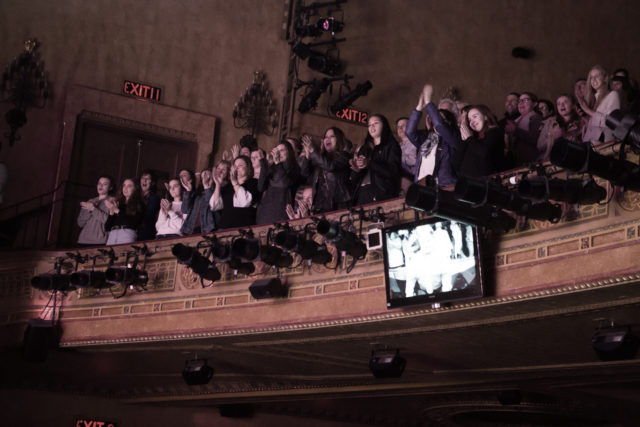Allegro
Broadway audiences becoming more diverse
Volume 120, No. 2February, 2020

The Broadway League recently released its 22nd annual demographics report, which provides a comprehensive analysis of the theatregoers who attended Broadway shows in New York City last season. It also compares current Broadway theatregoing habits in New York City to previous seasons and aids in predicting trends for the future.
In the 2018-2019 season, attendance reached an all-time record high of 14.8 million. Among these, 2.8 million international visitors attended a Broadway show. This represents the highest number of attendances by tourists from outside the U.S. in history. Along with the overall growth in attendance, the number of admissions in the demographic category called “non-Caucasian theatregoers” reached a record high of 3.8 million. Additionally, Broadway welcomed 3.4 million admissions by those under age 25, the third season in a row that attendance from younger audiences topped 3 million.
The analysis is based on extensive survey data gleaned from audience questionnaires distributed throughout the 2018-2019 Broadway season in New York City highlighting both audience demographics and their ticket purchasing habits. Each year brings fluctuations to the makeup of audiences due to a variety of reasons such as content, weather, the economy, and changing competition for leisure activities. Therefore, this longitudinal analysis demonstrates wider trends and changes of the audience over multiple seasons.
THE NUMBERS TELL THE STORY
- In the 2018-2019 season, Broadway shows welcomed 14.8 million admissions, an all-time high.
- Approximately 35% of those attendances were by people from the New York City metropolitan area.
- Sixty-five percent of admissions were made by tourists: 46% from the United States (but outside New York City and its suburbs) and 19% from other countries.
- This represents the highest number of attendances by international visitors in history – 2.8 million.
- Sixty-eight percent of the audiences were female.
- The average age of the Broadway theatregoer was 42.3 years old. This average has hovered between 40 and 45 years old for the past two decades.
- Along with the overall growth in attendances, the number of admissions by non-Caucasian theatregoers reached a record high of 3.8 million.
- Of theatregoers age 25 or older, 81% had completed college and 41% had earned a graduate degree.
- The average annual household income of the Broadway theatregoer was $261,000.
- The average number of attendances by the Broadway theatregoer was 4.4 in the past year. The group of devoted fans who attended 15 or more performances comprised only 5% of the audience, but accounted for 28% of all tickets (4.15 million admissions).
- Playgoers tended to be more frequent theatregoers than musical attendees. The typical straight-play attendee saw seven shows in the past year; the musical attendee, four.
- Respondents reported having paid an average of $145.60 per ticket.
- Fifty-nine percent of respondents said they purchased their tickets online.
- The average reported date of ticket purchase for a Broadway show was 47 days before the performance, four days earlier than the previous season.
- Google was the most common initial source theatregoers named when they were asked where they looked for information about Broadway shows. Ticketmaster and Broadway.com followed Google.
- Twenty-two percent said that they relied primarily on word-of-mouth from people they knew.
- Most theatregoers attended in pairs or small groups of family or friends.
- The vast majority of current theatregoers had some connection to theatregoing as a child.
This demographic report is published annually by the Broadway League. From June 2018 through May 2019, the League’s research department administered surveys at 49 different productions at 98 individual performance times. Shows were selected on a quarterly basis to represent what Broadway was offering that season (i.e., a proportionate number of musicals versus straight plays; revivals versus original works; and new productions versus long-running shows). Questionnaires were distributed at multiple performances per show to account for variances in the weekday, weekend, evening, and matinee audiences. Completed questionnaires were tabulated and weighted based upon the actual paid attendance for each show. In total, 17,400 questionnaires were distributed and 8,972 were returned, representing a 52 percent rate of return.
